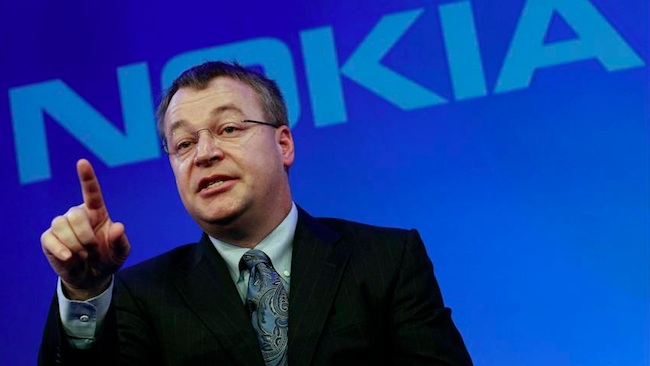Nokia announced their decision to bet the farm on Windows Phone roughly 15 months ago. They’ve had their Lumia devices out on the market since November 2011. We know they sold 2 million Windows Phones during the first three months of this year, and now we’re waiting until July to hear how many they sold in the current quarter. Why did Nokia decide to go with Windows Phone? How’s the company’s relationship with Microsoft? If you care about questions like that, then do yourself a favor and read “Nokia’s last stand: can the 147-year-old company design its way back?” in the June 2012 issue of Wired. There are several choice quotes in there that we’d like to highlight:
In the absence of control over its own OS, Ahtisaari and Elop believe that Nokia has four competitive advantages. First, there’s its prowess in camera technology, highlighted with the recent launch of the 808 PureView, a Symbian handset capable of taking 41-megapixel pictures. Similar technology is on its way to Nokia’s Windows handsets. Then there’s Nokia’s ability to innovate with hardware. “As a general direction,” Ahtisaari says, “I would say, think [about things happening] off the glass. On the N9 and in Symbian handsets already, if you want to listen to music, you just tap the speaker and music starts playing.”
Next, there’s location and mapping, which Elop describes as the third dimension of search (the first two dimensions relating to “what?” and “who?”). Nokia, which employs 1,600 geographers in its mapping division, offers turn-by-turn driving instructions in 50 languages in 100 countries. Google’s competing service, Google Maps with navigation, covers a mere 28 countries and one language — English. “It’s a huge source of competitive advantage,” says Elop. “These are critical and very hard-to-replicate assets.”
Finally, there’s industrial design: the art of building appealing products with the requisite functionality at, or below, a target cost. “Industrial design should not be underestimated,” says Ahtisaari.
…
Two years ago, Nokia sold 55 per cent of the smartphones bought by Europeans. By 2011, its market share was down to 11 per cent. According to industry analyst Horace Dediu, Android has “completely absorbed” Nokia’s losses in Europe.
…
Elop has a picture of the Canadian national team set as the wallpaper on his Lumia 800.
…
Says Ahtisaari: “We brought together all of the industrial design, all of the colours and materials design, packaging design and all of the user-experience design into a single organisation.” As a result, Nokia’s chief designer now oversees “several hundred staff” in four design studios (London, Helsinki, Beijing and San Diego).
…
“Design matters a tonne,” says Elop. “That’s why Marko is in every discussion at the top level of the company.”
…
“Today, we have far fewer engineers working on OS plumbing, which is a huge consumer of R&D resource,” Elop says. “Let them [Microsoft] build it, and we’ll place on top things that differentiate us.” Consumers, he adds, really don’t care which OS powers their handsets. “[What consumers] want is a handset that offers a faster experience and does the job in fewer steps than other platforms.”
…
However, Nokia will benefit exclusively from some of the things that it proposes to bring to Microsoft’s phone software. Ahtisaari describes the situation in coded terms: “In Windows Phone, there will be things that happen to the core experience, on Lumia, that will be our own.” In particular, Ahtisaari is referring to Nokia’s camera software, which the company wants to integrate with Windows Phone without it falling into the hands of rivals, such as HTC and Samsung, which also make Windows handsets.
…
Elop also points to Nokia’s research and development spend, which, at 14.5 per cent of revenues, is relatively high, despite the decision to outsource smartphone OS work. “We have increased our R&D spending [on low-end mobile phones],” he says, “so there’s clearly something being developed, underway. There’s some excitement there.”
So there you go. Nokia has made design a priority, so much so that there are several hundred designers working for the company spread out over four different countries. R&D spending has been increased, though we don’t understand why it’s being poured into low-end phones. Elop also says consumers don’t care about the OS their device runs, which is a bit controversial.
Make sure you read the whole piece to appreciate the Nokia of today.
